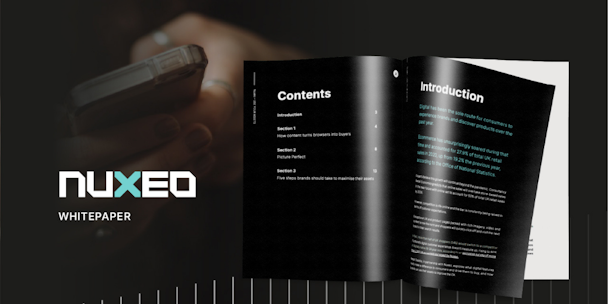Retailers can no longer succeed without rich digital content
The idea of retailers and brands using content to engage customers and improve sales is not a new one. Ever since the advent of e-commerce around 20 years ago, companies have been using personalization to attract and retain customers and using product information to create an enticing online customer experience.

Retailers can no longer succeed without rich digital content
But the nature of this content and how people consume it has changed enormously. Recent Nuxeo research found that 43% of UK consumers engage with content from their favored brand or retailer once or more than once a week via email, while 42% engage via Facebook, retail websites and mobile apps.
Rich digital media – images, video, product information and more – are increasingly important in delivering a first-class experience to customers. People are shopping online more than ever, and crave an experience that gives them everything they could want during browsing and shopping.
Any brand or retailer that wants to succeed in modern business must embrace rich digital media.
Digital content and the customer experience
The Nuxeo research revealed that 54% of UK shoppers would change from a favored retailer to a competitor if the overall digital experience did not meet their expectations. Furthermore, almost two-thirds of shoppers would be more loyal to retailers and brands that deliver an exceptional customer experience.
Content really matters, and for online shoppers who are buying products without seeing and touching them in the real world, product information is critical. More than a fifth of the respondents in Nuxeo’s research said that insufficient product information, including images, videos and descriptions, was a significant inhibitor to shopping online.
In fact, nearly six in 10 UK shoppers say inadequate product information would lead them to buy elsewhere. In an increasingly digital world, shoppers have higher expectations for what good product information looks like, with razor-sharp imagery and videos the norm.
Images are deemed important for almost half of those surveyed. More than a quarter like to have 3D imagery, which shows the product at all angles when browsing. High-quality images are not just nice to have either. Almost a quarter of shoppers said poor-quality imagery would stop them from buying products. Video also has a big impact on purchasing behavior. 21% of shoppers often use video to make purchase decisions, rising to 28% in the 16-to-24 demographic.
Making effective use of rich digital media
Digital assets encourage customers to spend money. This means that smart brands and retailers will do everything in their power to make the best use of the assets they create and those they already hold. Many brands could not carry out the model photoshoots in a year defined by lockdowns and social distancing, so existing content became even more critical.
There are certain key criteria for retailers keen to use rich digital media more effectively, not least of which is knowing their customers’ requirements. Retailers must engage with shoppers, seek feedback on their needs and wants online, and tailor their innovation strategy and investment priorities accordingly.
Of even greater value, though, is utilizing the right technology. Managing digital content requires the right platform. A good Digital Asset Management (DAM) system can help brands fully unlock the potential of existing assets. Storing, organizing and sharing a central library of digital media assets can speed up innovation by making it easier to find those assets, which can be used on websites and advertising.
The need for product asset management
Using PAM (Product Asset Management), a strategy to leverage enterprise, DAM offers even more value. PAM provides a common platform for critical product information (both assets and data) at crucial points in the product lifecycle (such as design, packaging or campaign development), with anyone that needs to access this being able to do so in real time.
It enables companies to bring new products to market more quickly by eliminating previous analogue dependencies and bottlenecks (such as physical samples) and enabling a true, digital supply chain.
The past five years have seen an undoubted increase in the use of content to engage customers, and the pandemic has only served to accelerate this trend even faster. Rich digital media is essential to success in modern retail, and any brand not making effective use of it will struggle to build meaningful relationships with its customers. PAM is the key that unlocks the full potential of digital content.
To learn more, please download the Nuxeo whitepaper – Use your assets: How rich imagery, video and product content can boost sales.


